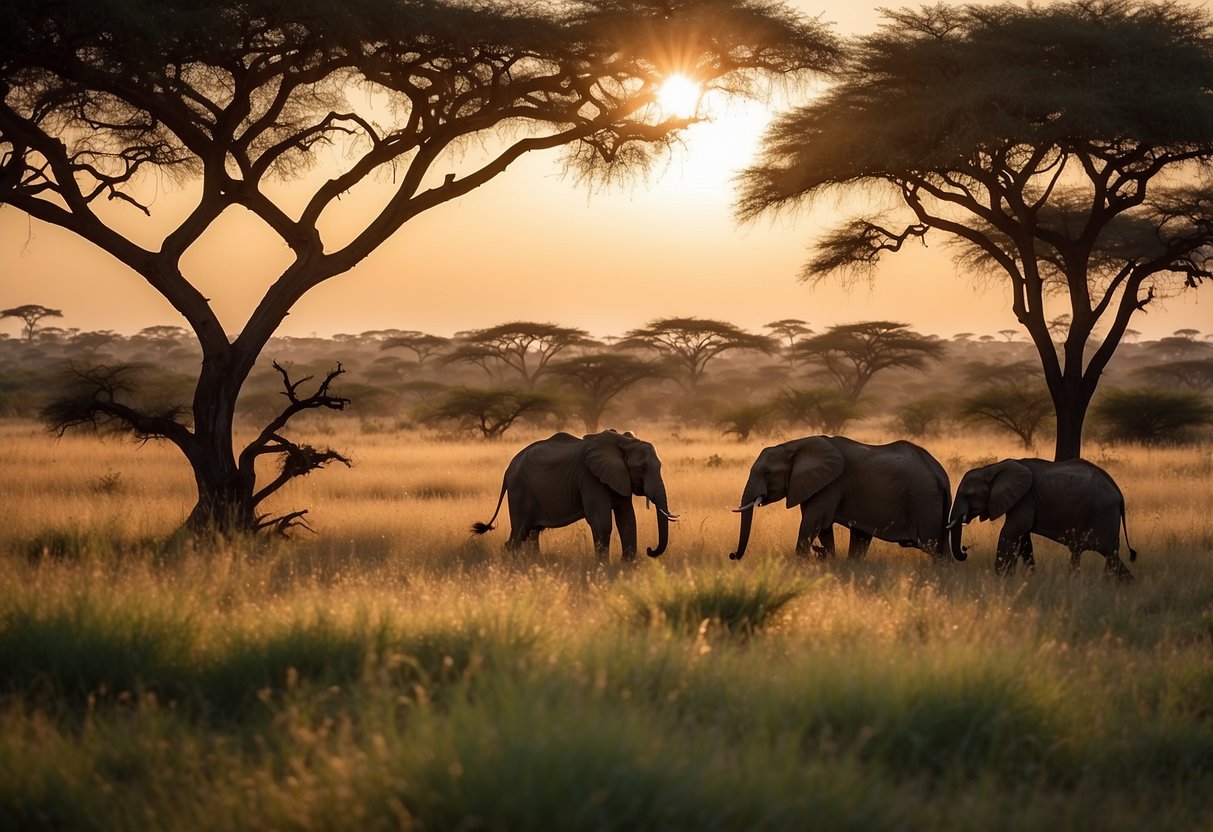
Exploring the Serengeti offers a chance to witness the magnificent wildlife and breathtaking landscapes of Africa. As you prepare for your safari adventure, it’s essential to know how to make the most of your experience. For the best game viewing, consider visiting during the Great Migration, when millions of wildebeest and zebras traverse the plains.
A well-planned trip can provide unforgettable encounters with the Big Five, including lions, elephants, and buffaloes. Staying in various types of accommodations, from luxury lodges to mobile camps, allows travelers to experience different aspects of the Serengeti ecosystem. Packing the right gear, such as binoculars and a good camera, ensures that you capture every moment of your journey.
Preparation also involves understanding the local climate and geography. The Serengeti’s vast plains and seasonal weather patterns play a significant role in animal behavior. Knowing what to expect from the environment can enhance your adventure and ensure a more comfortable and immersive experience.
Planning Your Serengeti Safari
To make the most of your journey to Serengeti National Park, it’s crucial to determine the ideal time to visit, craft a well-thought-out itinerary, and consider your budget requirements thoroughly.
Determining the Best Time to Visit
The best time to visit the Serengeti depends on what you wish to see. The Great Migration is often a primary draw. Typically, June to July is ideal for witnessing the wildebeest migration. Calving season occurs in January and February, when you can see newborn animals. The dry season from June to October provides excellent game viewing opportunities as animals gather around water sources. There’s less rain, making it easier to navigate the park.
Understanding the Safari Itinerary
A well-structured safari itinerary ensures you experience the Serengeti’s highlights. Allocate enough days to explore the central Seronera area for its year-round wildlife, the northern reaches, particularly for the migration if you’re visiting between June and November, and the western corridor during May and June for the Grumeti River crossings. Don’t rush; a seven to ten-day itinerary allows for a more relaxed and in-depth experience. Consider adding a Hot Air Balloon Safari to catch a bird’s-eye view of the park.
Budget Considerations for Your Trip
Budgeting for a Serengeti safari requires accounting for various costs, including park fees, accommodation, transportation, and guided tours. Park fees can be around $60 per person per day. Accommodation ranges from budget camping at $50 per night to luxury lodges costing several hundred dollars. Transportation, including flights into the region and internal park travel, should be planned in advance to get the best rates. Guided tours often offer packages that provide value, combining transportation, accommodation, and meals. Research and book early for the best deals.
Safari Accommodations
Selecting the right place to stay on a safari can significantly impact the experience. Different accommodations offer unique advantages depending on individual preferences and budgets.
Choosing Between Lodges and Tented Camps
When deciding between lodges and tented camps, it’s essential to consider the level of comfort and immersion desired. Lodges are permanent structures that often provide amenities like swimming pools, restaurants, and well-furnished rooms. They are ideal for those looking for higher comfort and convenience.
Tented camps, on the other hand, offer a more immersive experience, bringing guests closer to the natural environment. These camps typically feature large canvas tents with comfortable beds and private bathrooms. Although they may lack some luxuries found in lodges, they are perfect for those seeking a more authentic feel.
Luxury Lodges Versus Budget Camping
Luxury lodges provide high-end amenities, including gourmet dining, spa services, and well-appointed rooms with en-suite bathrooms. These lodges often offer guided safari tours, ensuring guests have a memorable and comfortable stay. They tend to be located in prime spots within the park, offering breathtaking views and excellent wildlife sightings.
Budget camping is a more economical option, ideal for those willing to trade some comforts for a more cost-effective experience. Campsites typically include basic facilities like shared bathrooms and communal dining areas. While the experience may be more rustic, it allows travelers to enjoy the Serengeti without a substantial financial commitment, making it accessible to a broader range of visitors.